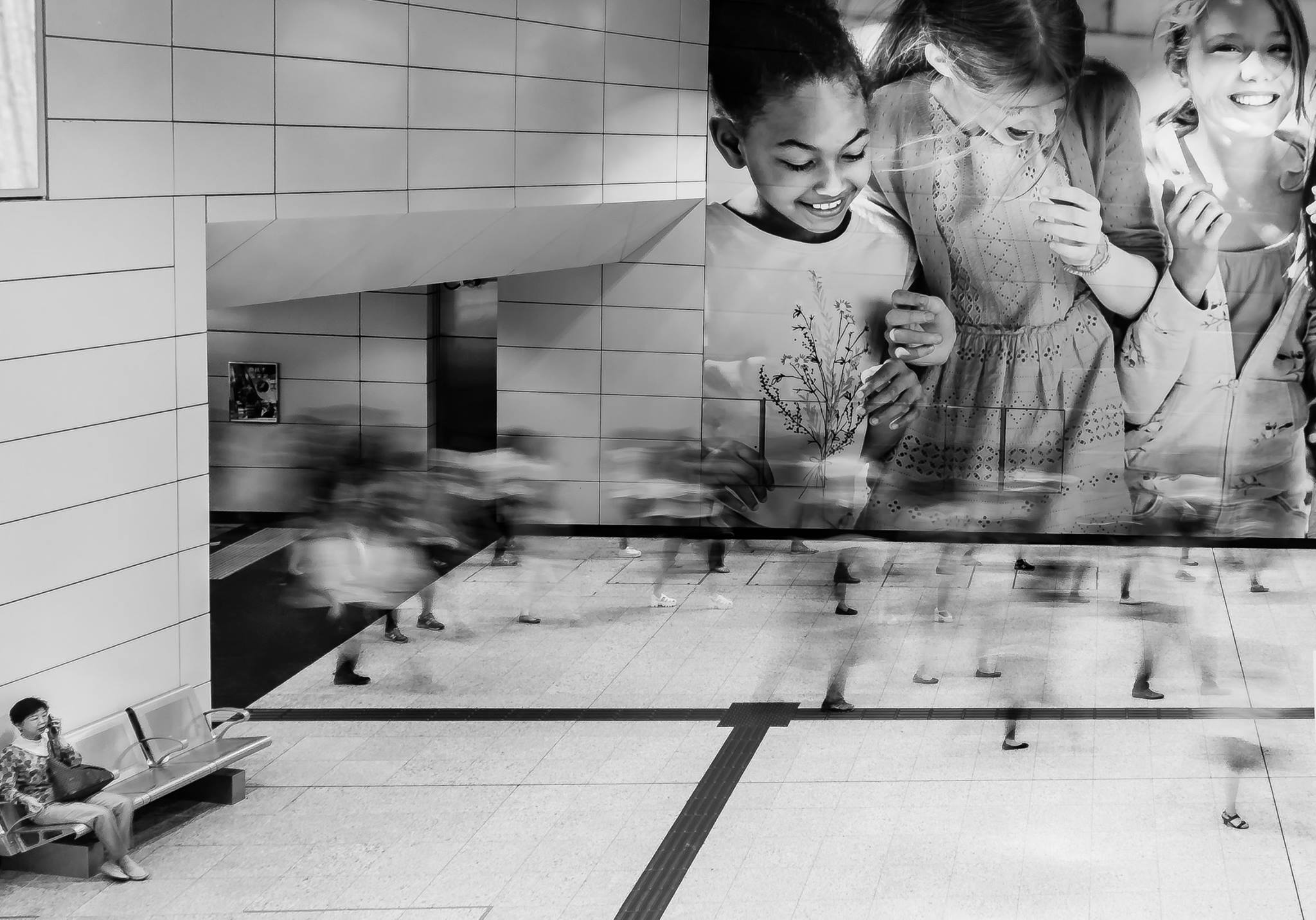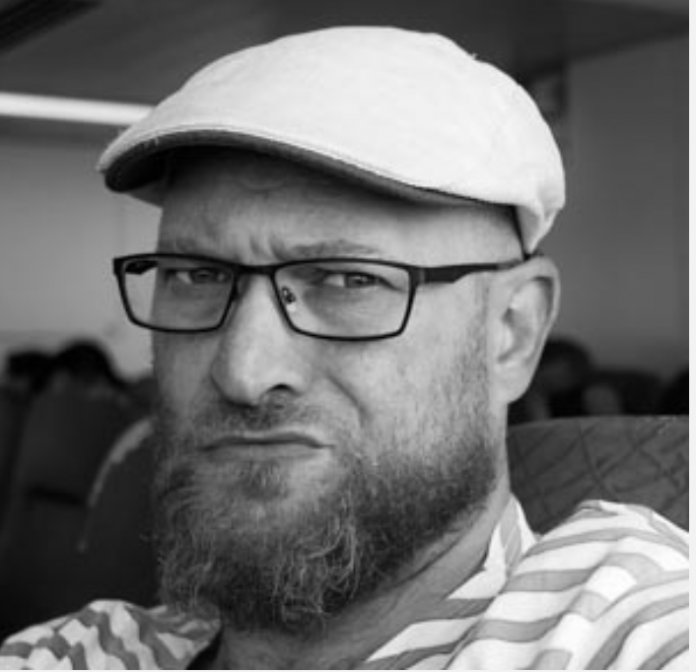
DB: How did you discover your passion for photography?
When I was a kid, my mum had a film camera Werlisa. My brothers and I were not allowed to use it because developing film at that time in Spain was expensive and also because we were the kind of naughty boys who broke everything. But I liked the Werlisa and sometimes when my mum could not see me, I took it and looked through the viewfinder and I could imagine the photos I could take. It is a pity these photos are only in my mind.
15 years ago a good friend of mine in Spain who was learning photography always carried a heavy analogue camera. After he showed me the results and taught me some techniques, I bought a camera and started shooting. He told me that more important than the camera is the eye and what it sees.
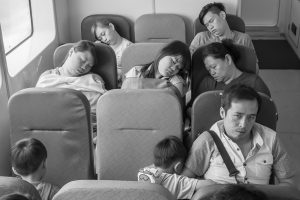
At first, I took photos without any criteria whatsoever, or with the same criteria with which a soldier in war shoots, with his eyes closed. I did not really know what I was doing, but I knew I liked it. I shot insects, flowers, the sky, vegetables, people, portraits. I liked to look through my viewfinder as if I was a kid with that Werlisa. It was not until a few years later when I arrived in Hong Kong for work, that I was able to turn my hobby into something more. In 2013, I quit my job in PR to become a Spanish Teacher and that is when, armed with a small compact camera, I discovered how much this city has to offer anyone who is willing to stop for a while and observe the city. Everything seemed worth photographing to me and my walks inbetween Spanish classes became longer and longer.
So, since 2013 I have been carrying a camera with me everyday and observing what kind of new photos I can take. This is how I discovered my passion for photography. Everyday, when I arrive home, I watch the photos I took that day on my computer and look at other photographer’s photos and compare. I read about photography and listened to photography podcasts and radio. Everything I learnt I wanted to practice the next day. When the alarm clock sounded for work every morning, I woke up fast and took the camera for the new challenge.
DB: On your website you quote Dorothea Lange: “The camera is an instrument that teaches people how to see without a camera.” Can you explain this quote and what it means to you?
Everyone can see but not everyone can observe. Taking good photos is the result of shooting and shooting again and every shot teaches you how you can improve your next photos. My camera and experience taught me how to observe the street. It made me more intuitively able to capture decisive moments, find geometric shapes in the street when other people only can see a wall, or a corner, finding juxtaposition of people what I most like in my photos. When you take thousands of photos you know in less than one second which kind of shutter speed you want. When you see the light what comes from one direction and impacts something or someone, the camera teaches you to love the shades, the reflections, the scenes in the street and this is what the camera teaches you. It teaches you how to see without a camera and I think it is one of the best quotes.
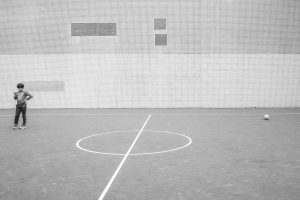 DB: Why do you choose to predominantly photograph in black and white?
DB: Why do you choose to predominantly photograph in black and white?
I have a lot of photos in colour but I prefer black and white, why? It is funny. At first I did not know how to edit my photos in colour and to do it in black and white was more simple, fast and I was able to focus more in the details. Once I learnt how to edit I compared them in colour and black and white and my intuition or my liking for photos told me it should be in black and white. I love photos in colour for sure! But for my style I prefer black and white. Someone said “If you want to see the colour of the clothes shoot in colour, if you want to see the colour of the people’s souls shoot in black and white” and I really agree. I think that black and white photos have more strength and more visual impact
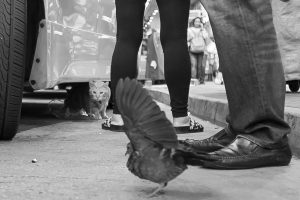 DB: What attracted you to capturing people rather than landscapes?
DB: What attracted you to capturing people rather than landscapes?
I like people, I like to talk with everyone and I like observing people’s behaviour in the street: the emotions, tiredness, happiness, sadness… their style of life, their culture, the way they are, the way the act, the way they stay in the street, in a shopping mall, in the library….it is like a movie with different actors. For my photography, understanding is very important. I must have the human presence in every photo – emotions, humour, decisive moments, sadness etc. I don’t really know how to take landscapes photos and it may be because I live in Hong Kong, sharing the streets with 8 million different people. if I lived in Sahara desert, I would still look for people to photograph.
DB: As well as producing your own art, you also created a photography school to help others learn visual skills. What inspired you to use your talents to teach others?
I like to teach Spanish in Hong Kong but I know kids in Hong Kong are very stressed and busy. After school, they have more lessons like English, Spanish, French, piano, maths, Chinese writing, religion… Hong Kong is a bad place for being a kid. They have no time and space for playing and most of them don’t have a lesson, time or opportunity for creating. I spend my days with children of different ages, with different Spanish language level, different personality, but all of them like creating. Kids are artists. They don’t want to follow adult rules where everything is a must, do this, do that, not like this, pay attention, be the best, focus, listen to the teacher etc… in my opinion all this is wrong. We are creating people who will learn a lot of languages but wont be able to talk with someone.
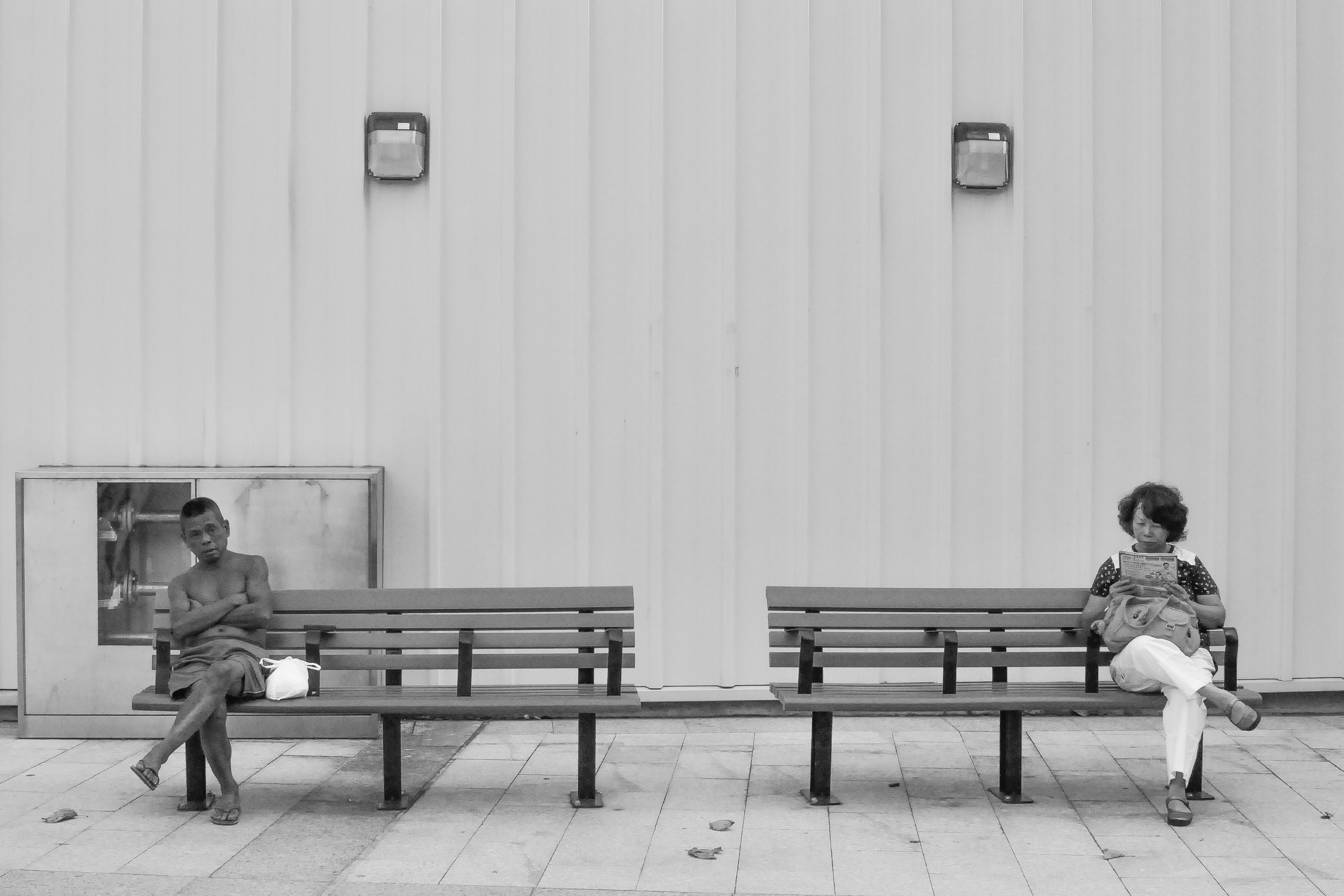
I was inspired to teach photography to the kids a few months ago. I usually give candies to my students when they learn or do the things good, but one day a student who has been learning Spanish with me for 5 years asked me why I always carried a camera. I replied that it’s because I liked to take photos and he told me he would like to take photos too. I asked him if he preferred candies or taking a photo once he did his Spanish exercises. He answered “both.”
So, I started to lend him my camera and taught him how to find geometric shapes, how to do exposure, how to communicate with images. I teach him every week and he has one week to think what kind of photos he will take for next lesson. He asked me not to teach Spanish anymore; he likes creating. I started to lend my cameras to more students and it happened the same.
I also teach adults how to observe in the street. I don’t teach photography, I teach to observe for travelling, for taking good photos and being creative, because photography is a hobby forever. Both adults and kids learn how to create stories with photos, how to express themselves, how to read an image, how to interpret it. Their creativity inspired me to teach.
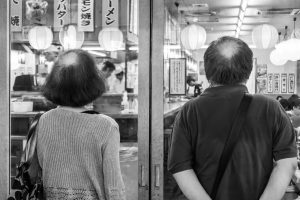 DB: What is the most rewarding aspect of your teaching?
DB: What is the most rewarding aspect of your teaching?
We are learning everyday, photography is an art and everyone has their own. I am surprised when a new student comes with a different idea. Everything is good in photography, a picture is worth more than a thousand words but an idea, a concept id worth more than a thousand pictures, This is the most rewarding of my teaching – to see different ideas, different concepts with only one image. With a series or a sequence, everyone is free to have different concepts or ideas and if they are able to transmit into a picture, this is called art.
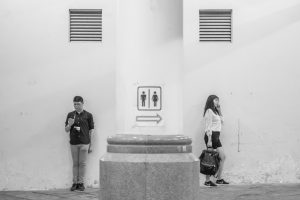 DB: And finally, what advice would you give our readers who would like to improve
DB: And finally, what advice would you give our readers who would like to improve
their own photography?
There is only one secret – have a camera and shoot. Create your own images, be inspired by someone but don’t copy. Every photo you take is a step to taking a better one. The best photo you are going to have you will take tomorrow, but start today.
Website: www.schoolofphotographers.com
Other Website: www.miguelitor.net
Facebook: https://www.facebook.com/MiguelitorStreetPhotographer/
Instagram: @miguelitors @school_of_photographers
